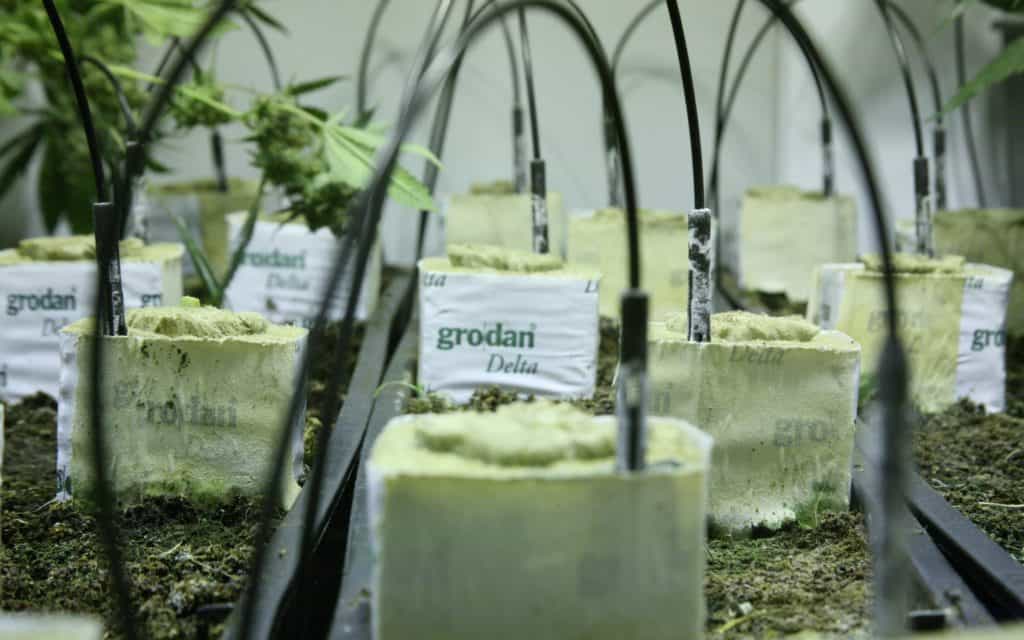1. Soilless Mixtures

Soilless mixtures are sphagnum-, peat- or coco-based blends that look, act and feel extremely similar to regular topsoil. These mediums are better suited for indoor gardens than outdoor topsoil because they carry less pests, diseases, bacteria and mold. Standard topsoil is rarely used indoors anymore.
Soilless mediums generally come pre-mixed with beneficial amendments like perlite, wood chips and, at times, mild nutrient additives. Many advanced growers will mix their own ratios of base medium (most often coco coir) with additives that absorb and retain moisture as well as others that help aerate the medium.
Soilless mixtures are most commonly used in top-feed drip- or spray-emitter systems, which are able to saturate the medium evenly (especially when spray emitters are used). This type of medium doesn’t perform as well in flood-and-drain or DWC systems, as soilless mixtures are composed of small particles of matter.
2. Mineral Wool

Mineral wool—or rockwool, as it’s most commonly known—is a medium made from spun molten limestone, with a look and feel similar to fiberglass. Rockwool is extremely absorbent, with an ability to stay firm while holding moisture for hours at a time. However, rockwool is a tough medium to understand and is not recommended for beginners.
Rockwool offers only limited buffering for roots, making nutrient dosing a precarious endeavor for those new to the medium. Salt buildup is another common issue, requiring rockwool growers to do pure-water flushes at least once a week. Keep the rockwool at a pH between 5.5 and 5.9 for best results, and be sure to cover it from light to prevent algae growth around the root zone. Rockwool is best suited for use with flood-table systems or flood-and-drain setups.
3. Hardened Expanded Clay

HEC, or pop clay, has the look of small brown marbles. It offers a number of benefits, including being inexpensive, reusable and sterile. It’s also very sturdy and great for stabilizing plants in flood-and-drain systems, though it can very easily be used in DWC and nutrient-film technique (NFT) setups as well.
The downside with HEC is that it offers little to no buffering, rendering it useless as a safeguard against overfeeding (i.e., nutrient burn). Growers who choose HEC need to be well versed in the nutrients and doses they’re using. Additionally, top-feed setups like drip-emitter systems tend to leave too many dry areas in the medium, making it harder for the HEC to become saturated and deliver adequate moisture to the roots.
Related: The Ultimate HIGH TIMES Guide: How To Hydro
For all of HIGH TIMES’ latest grow coverage, click here.
from
http://hightimes.com/grow/3-best-hydro-mediums/
No comments:
Post a Comment